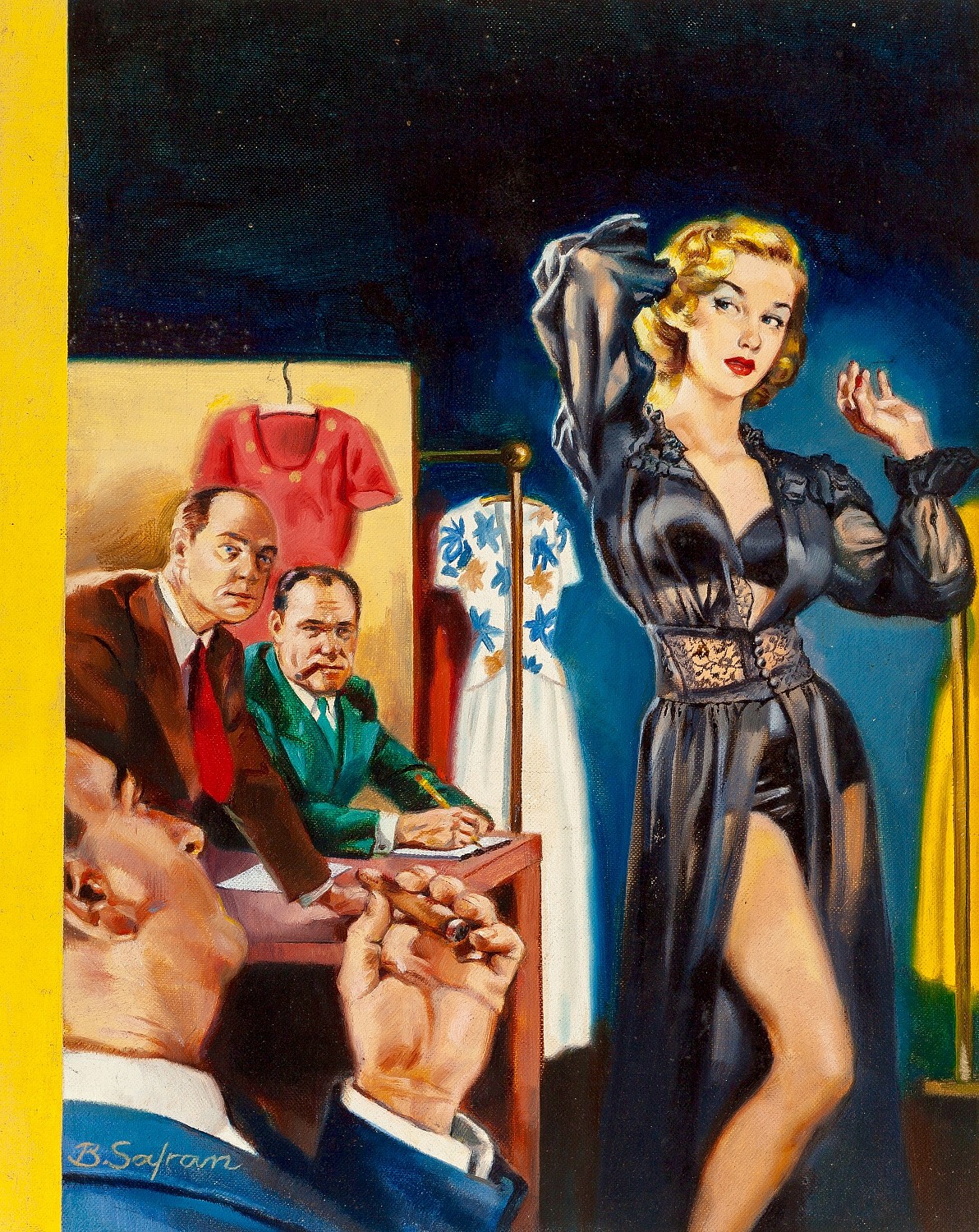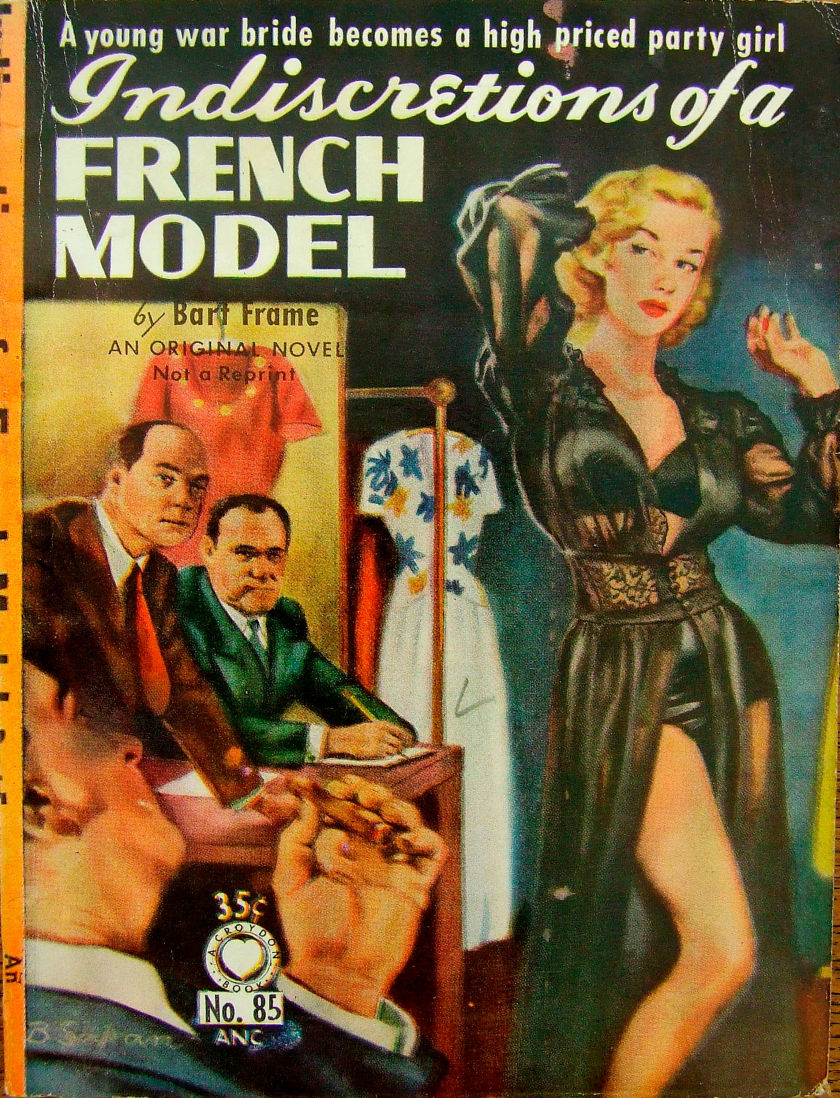"The Indiscretions of a French Model, Paperback Cover" Lot no. 2893
By Bernard Safran (1924 - 1995)
1953 (Estimated)
15.00" x 12.00"
Oil on Canvasboard
Signed Lower Left
REQUEST PRICE
PURCHASE REQUEST
This illustration was published as the cover for Indiscretions of a French Model by Bart Frame, Croydon No. 85, 1954.
Explore related art collections: Books / Paperback Covers / Pulp / $100 - $5,000 / Pin-Ups & Nudes / 1950s / Romance / Women as Subjects / Fashion
See all original artwork by Bernard Safran
ABOUT THE ARTIST
Born in New York City to Russian immigrant parents who fled Czarist Russia, Bernard Safran showed early art talent and attended New York's High School of Music and Art. He later graduated from Pratt Institute, and then served in the U.S. Army Corps of Engineers in China, Burma and India during World War II.
In 1946, he began work as a commercial illustrator, freelancing as a book-jacket illustrator for mysteries and westerns. He earned adequate money in these jobs but decided to focus on fine art. In the mid 1950s, he spent six months studying masterpieces in the Metropolitan Museum of Art, examining the techniques used by such artists as Rubens, Velasquez and Rembrandt. Studying and copying these Old Masters, he learned an oil-glaze technique that gives Safran's work a special resonant coloration. He built up the surfaces slowly, layer upon layer, "accumulating richness, at the same time allowing the artist to lavish great attention upon each detail. The resulting total, while somewhat dark (Safran favors medium greens, blues, and reddish browns, and avoids whites and pastels), has a vital intensity that is remarkable." (Saltanic magazine)
A reviewer of a 1987 New Brunswick, Canada exhibition commented on the contrast between the tone of the subject matter of Safran's paintings and the shining finish of the artwork. Referencing a painting titled "The Parade", the reviewer wrote that it was "rather dark overall, and claustrophobic with its dozens of townspeople crowded along the foreground, (but) is nevertheless striking for the lustrous emeralds, maroons, and rusty reds of the children's winter jackets. The presence of twenty such works gathered into one gallery at the Art Centre was almost overwhelming."
Subsequently, after attempting with only modest results to have a fine-art career in New York, Safran was hired by TIME Magazine, which at that time featured a cover portrait each week of a prominent figure in the news. Between 1957 and 1966, Safran produced 73 TIME covers. Thirty-six of these are now in the collection of the Smithsonian National Portrait Gallery in Washington DC.
Eventually Safran quit illustration work and turned to painting scenes of everyday life in New York City. He took thousands of photographs of street scenes and used them for studio paintings in realist style of people going about their lives. Because he was using a style that was counter to the prevalent abstract expressionism, he did not receive much attention for his artwork.
In 1973, Safran moved his family from suburban New York City to a remote nineteenth-century farmhouse, several miles from the nearest neighbor, outside of Sackville in New Brunswick, Canada. Here he returned to the theme of the experience of everyday life, frequently taking as his subjects the farmers, woodsmen, and fishermen of eastern Canada.
In 1989, Safran retired. He died six years later in 1995.
http://www.safran-arts.com/bio.html including a review titled:"Bernard Safran: A Decade", University of New Brunswick Art Centre, Fredericton, New Brunswick, 2-30 September 1987, from issue 31 (Spring/Summer 1988) of ARTSatlantic magazine
(Via AskArt.com)



